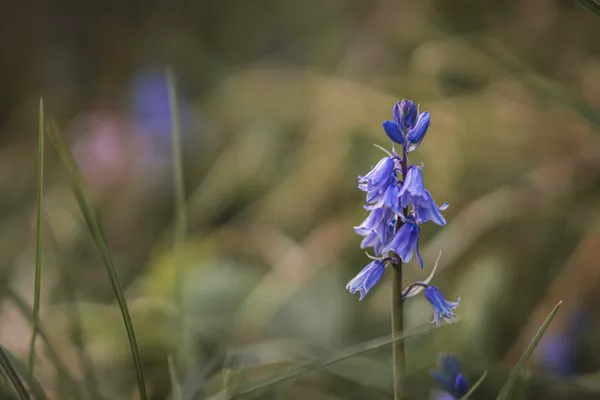The threat of ticks and their potential to transmit diseases has heightened concerns about outdoor activities, particularly in wooded and grassy areas. While conventional tick repellents play a crucial role in protection, there’s a lesser-known ally in the battle against ticks: certain flowers. In this article, we delve into the realm of tick-repelling flowers, examining the science behind their efficacy and providing insights into creating a tick-resistant environment.
Understanding Tick Behavior and Risks
Ticks are small arachnids that attach to hosts, including humans and animals, to feed on blood. They are vectors for various diseases, such as Lyme disease, anaplasmosis, and babesiosis, making their presence a serious health concern. Ticks are most active during warmer months, from spring through fall, when people engage in outdoor activities like hiking, gardening, and camping.
1. The Hidden Power of Tick-Repelling Flowers
Natural Repellents: Certain flowers emit natural compounds that deter ticks and other pests. These compounds, often found in essential oils within the plants, serve as natural defenses against external threats.
Companion Planting: Companion planting involves strategically placing plants to create mutually beneficial relationships. Some flowers emit odors that mask the scent of hosts, making it harder for ticks to locate potential targets.
2. Flowers That Repel Ticks
Chrysanthemums: Chrysanthemums contain pyrethrin, a natural insect repellent commonly used in commercial tick repellent sprays. The presence of pyrethrin in chrysanthemums makes them effective in deterring ticks.
Lavender: The aromatic scent of lavender is beloved by humans but detested by ticks. Planting lavender around outdoor seating areas can help create a tick-free zone.
Marigolds: Marigolds release a distinct odor that repels not only ticks but also mosquitoes and other insects. Their bright colors add aesthetic value to gardens while providing protection.
Rosemary: Rosemary’s fragrant leaves contain essential oils that are known to deter ticks. Placing potted rosemary near entry points or outdoor seating areas can be effective.
Garlic: Garlic’s strong scent extends its repellent properties beyond vampires. Planting garlic in your garden or around outdoor spaces can help keep ticks at bay.
Mint: Mint’s refreshing aroma is a natural tick repellent. However, mint’s rapid growth and tendency to spread make it more suitable for contained planters.
3. Designing a Tick-Resistant Landscape: Tips and Considerations
Strategic Placement: Plant tick-repelling flowers near outdoor seating areas, play areas, and entry points to form a protective barrier.
Variety Matters: Combining different types of tick-repelling flowers enhances the overall effectiveness of your tick-resistant landscape.
Maintenance: Regularly prune and care for your plants to ensure they remain healthy and potent in their tick-repelling properties.
Garden Borders: Plant tick-repelling flowers along the borders of your garden to create a natural boundary that ticks are less likely to cross.
Mulch Choices: Consider using cedar or cypress mulch, which naturally repel ticks due to their aroma.
Tick Checks: While tick-repelling flowers help reduce the risk of tick exposure, they do not provide complete protection. Perform regular tick checks on yourself, family members, and pets after spending time outdoors.
4. A Holistic Approach to Tick Prevention
Clothing: Wear light-colored, long-sleeved clothing and tuck pants into socks to minimize direct contact between ticks and your skin.
Tick-Repellent Clothing: Invest in clothing treated with tick-repellent substances for added protection.
Tick-Proof Your Yard: Beyond flowers, create a tick-unfriendly environment by keeping grass short, removing leaf litter, and maintaining a well-maintained landscape.
Tick-Repellent Sprays: Utilize commercially available tick repellent sprays on clothing, gear, and exposed skin when venturing into tick-prone areas.
Tick Removal: If a tick is found attached, remove it promptly with fine-tipped tweezers, grasping it as close to the skin’s surface as possible.
5. Promoting Awareness and Protection
Creating a tick-resistant environment not only shields you and your loved ones from potential tick-borne diseases but also fosters awareness about effective prevention strategies. By incorporating tick-repelling flowers into your landscape, you contribute to the preservation of public health while embracing a more natural approach to tick prevention.
Conclusion
Ticks pose a significant health risk, and it’s essential to employ multiple strategies for protection. Incorporating tick-repelling flowers into your outdoor spaces can play a valuable role in reducing tick exposure. However, it’s crucial to remember that while these flowers contribute to tick prevention, they are just one component of a comprehensive approach. Combining tick-repellent flowers with proper clothing, regular tick checks, and other preventative measures offers a holistic defense against these troublesome arachnids. By cultivating a tick-resistant environment, you create a safer, more enjoyable outdoor experience for yourself and those who share your space.


